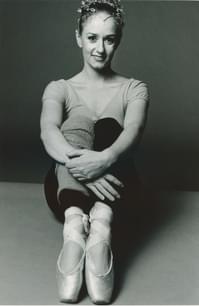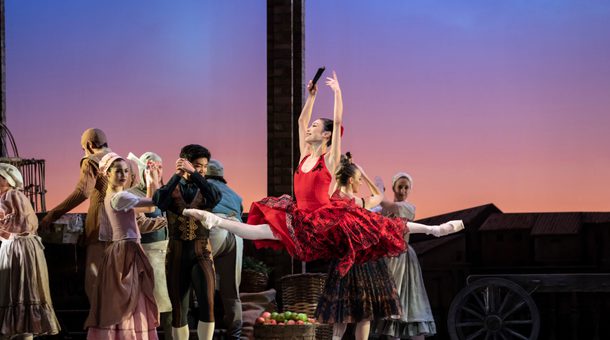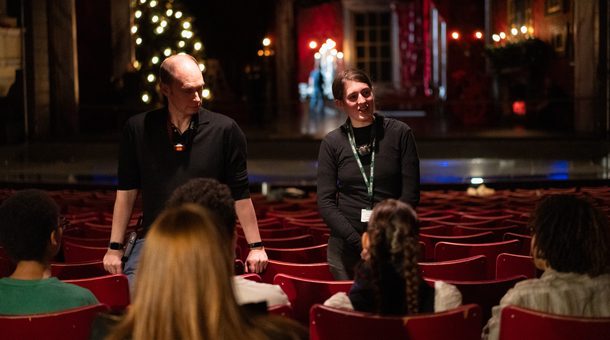News Story
Former Principal with the Company and now a Member of BRB's Board of Directors, Sandra Madgwick, shares some of her memories of her first pointe shoes.
I wore my first pair of pointe shoes at age ten when I was training at The Solihull School of Dance. Bought in a local Birmingham store, they were the traditional pink satin, and it was always a highlight when the teacher would tell us to 'change shoes' and we would rush to the side to put on our precious pointes and begin the strengthening exercises of rises at the barre.
Arriving a year later at The Royal Ballet School I was initially disappointed that there was no mention of pointe work, but I did hear that if I put surgical spirit on my toes every night the skin would harden and it would mean no skinned toes. I took this very seriously, and without fail dabbed my feet every night with surgical spirit. There is no knowing if this really is the reason, but it is true that I never had to pad or bind my toes, and I never had a skinned toe.
After a year of solid ‘back to basics’, the time finally came for Freed’s of London to fit us with our shoes. It was an exciting occasion which I felt we had really earned as it had taken so much patience and hard work (and a lot of surgical spirit!) to get there. I remember us all laughing and holding each other’s hands for support as we stood up in the shoes trying to decide which pair made our feet look the most attractive.

It was always a highlight when the teacher would tell us to change shoes and we would rush to the side to put on our precious pointes

There are a plethora of different pointe-shoe makers now, with many different adaptations, but in the early 1980s it was generally a choice between Freed’s or Gamba, with Freed’s being the more popular of the two. In my mind Gamba had a prettier more elongated shape, but the toe of a Freed pointe shoe was slightly squarer which gave a good platform to balance on. The other reason for their popularity was that Freed’s makes their shoes by hand, every craftsman has an individual stamp which they put on the back of a shoe, and once you joined a Royal Ballet company you could choose a maker whose shoe fitted your foot best.
Once chosen you would compile a list of individual measurements for the maker to follow, which would include the exact length of the vamp (from toe to instep). This wasn’t just for aesthetics, it was also for important technical reasons, as a foot that has a high arch generally requires a longer vamp which offers more support. If a batch was slightly off the agreed measurements it could mean weeks of discomfort, your Freed’s maker was consequently one of the most important people in your daily dancing life.
Thinking about favourite shoes, these had to be when the shoes were dyed, and in particular the black shoes Maggie Hobson wears in David Bintley’s Hobson’s Choice. The process of dyeing the satin makes the shoe stiffer and gives it more rigidity, meaning a pair of shoes would last much longer and become more comfortable every time they were worn. Plus being black, the dirt wouldn’t show, so less after-show cleaning was required! I had one pair of black shoes that lasted for months, and they were a firm favourite.
From age ten up until retirement from my long performing career, it is a little daunting to think about the number of shoes I must have worn, with all the associated hours of stitching ribbons and elastics! But what is sure, is that every one of those shoes were part and parcel of an incredible journey.


